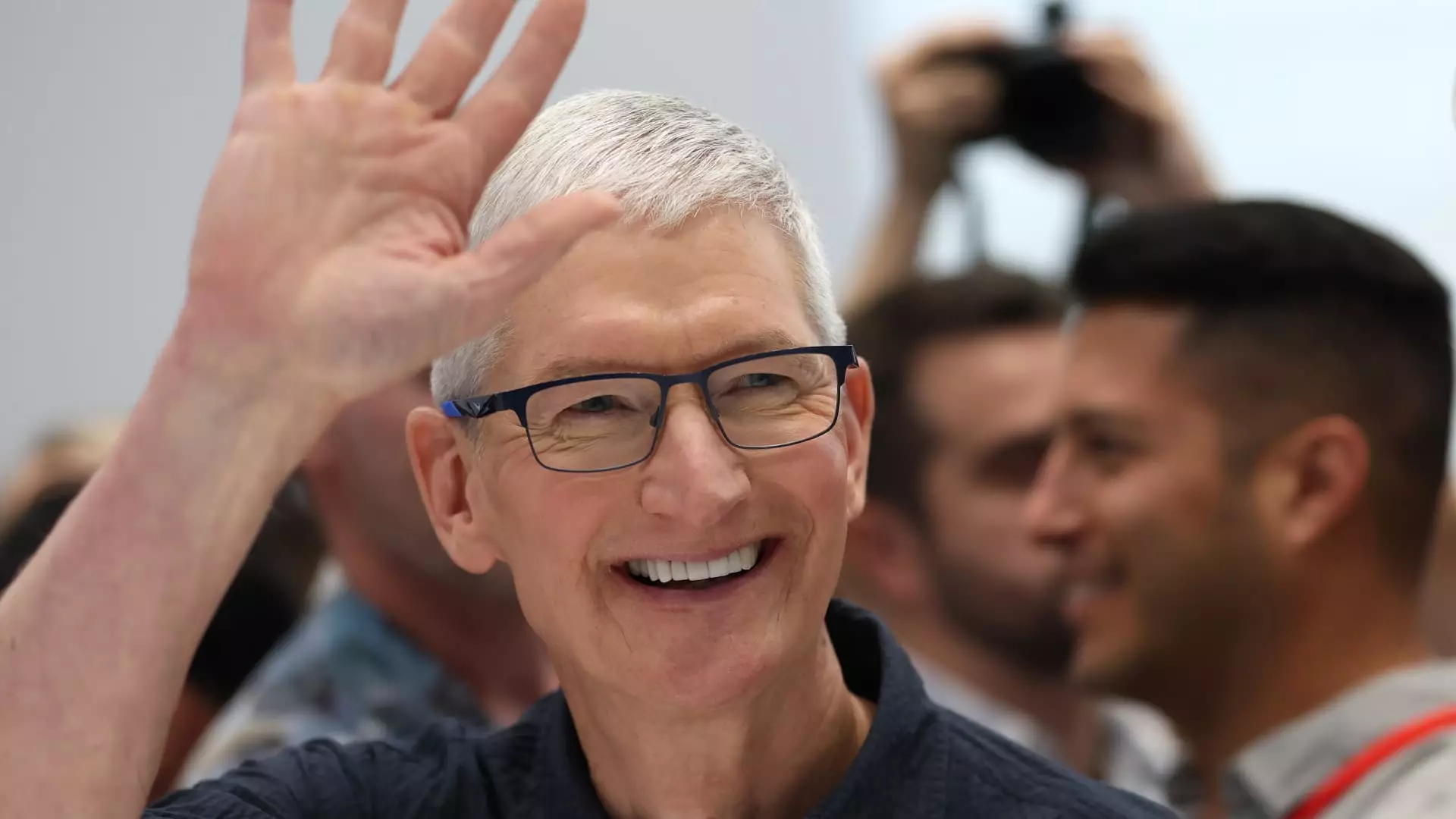In a remarkable comeback, Apple Inc. has seen its stock soar to unprecedented heights, revealing a paradox in investor sentiment. Despite a backdrop of predictions suggesting lukewarm demand for its newly launched artificial intelligence-driven iPhone 16, the tech giant closed at an all-time high recently. This phenomenon raises questions about consumer behavior, market dynamics, and the innovative capacity of Apple as it juggles both skepticism and optimism.
The driving force behind Apple’s stock surge can be traced back to robust performance in iPhone shipments during the third quarter of 2024. According to a report from International Data Corporation (IDC), shipments rose by 3.5% year-over-year, amounting to 56 million units—a figure that surpassed Wall Street’s expectations of 50 million. Financial analysts, such as those at Morgan Stanley, highlighted this data as a significant contributor to a potential revenue bump ranging from $2 billion to $4 billion for Apple’s Q3 results.
Contrary to some analysts’ apprehensions, Apple’s market share stabilized at roughly 17.7%, maintaining its position as the second-largest smartphone manufacturer globally, only trailing behind Samsung, which holds 18.3%. The IDC noted that older iPhone models, particularly the iPhone 15, benefitted immensely from aggressive marketing and promotional strategies surrounding Apple’s newest suite of AI initiatives.
Apple’s introduction of its generative artificial intelligence tools, collectively termed “Apple Intelligence,” is anticipated to be a game changer. Despite being rolled out at a staggered pace, primarily starting in the U.S., expectations remain high for customer upgrades, especially among users of older models such as the iPhone 12 and 13. With the holiday shopping season approaching, the historical trend has shown that customers are keen on future-proofing their technology investments, thereby driving demand.
Nabila Popal, Research Director at IDC, emphasized the potential benefits of the Apple Intelligence initiative, stating that it could significantly influence consumer purchasing decisions as they seek more advanced features and capabilities in their devices.
Despite the optimistic shipment data, analysts on Wall Street remain divided regarding the sales outlook for the iPhone 16 lineup. Concerns have been raised by institutions like JPMorgan and Barclays, who pointed to shorter-than-expected shipping times as indicative of lower demand for Apple’s new models. Such mixed signals contribute to a volatile landscape for investors trying to gauge the company’s future performance.
However, some analysts, including those from Evercore ISI, have adopted a more bullish stance, outlining that Apple’s stock could see significant gains if the company merely fulfills modest expectations for its upcoming earnings report. Their optimistic take aligns with Jim Cramer’s view, reinforcing a long-term investment strategy rather than speculative trading.
Apple’s surge in stock price has reestablished its position as the most valuable publicly traded company in the U.S., with a market capitalization surpassing $3.55 trillion. This robust valuation comes even as competitors like Nvidia have seen closure at historic highs, suggesting the competitive landscape remains stiff.
The contrast between the strengths and weaknesses highlighted in the analyst community reflects a nuanced understanding of software and hardware integration in smartphones. As Apple continues to innovate, integrating AI into its core offerings may serve as a vital differentiator in a saturated market.
As Apple continues to redefine its market strategy and innovate with cutting-edge technologies, the company’s performance in the coming quarter will be critical. Investors would do well to monitor the rollout of Apple Intelligence and subsequent consumer reception.
The ongoing debate about whether to “own it or trade it” mirrors broader sentiments about technology investments in general. Jim Cramer’s advocacy for a long-term ownership strategy underscores the potential for continued growth, provided consumers respond positively to technological advancements. As this chapter unfolds, Apple’s ability to leverage its storied legacy of innovation against initial skepticism may ultimately define its trajectory in a competitive landscape dominated by evolving consumer preferences.

